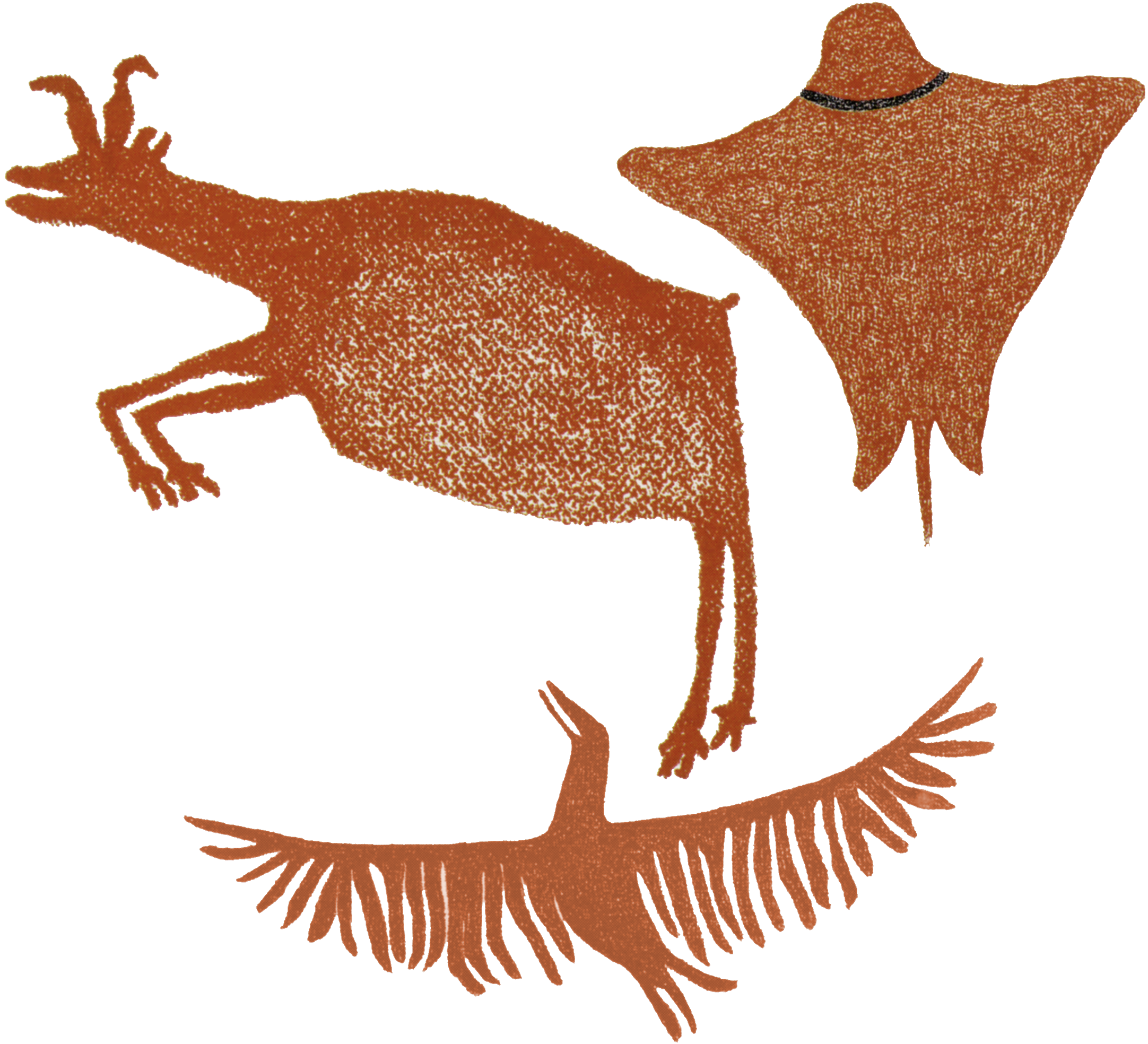



The merger archaeology of the mid-peninsula suggests an occupancy of many thousands of years. San Dieguito Man left his telltale artefacts on his way to the Cape. La Jolla-like tools suggest the passing of that people as well. Early splinters of Yuman folk followed at some undetermined time and added to the growing assemblage of human discards. Europeans found the area populated by a single, far-flung, loosely organised group. These first historic people were still working stone and contributing to the archaeological record, but hey had no bent for painting. Sometime during the latter part of this long human presence, a culture with organized, even institutionalized artists invaded this ground or evolved from its occupants. They painted as few on this globe have done, decorating hundreds of locations with thousands of images, great and small. They left no other obvious clues to distinguish themselves in the parade of peoples. Who were the Painters, How, what, why, and when did they paint?
Despite its marked resemblance to ancient rock art in Europe and Africa, the rock art paintings in central Baja California constitute a separate, distinct art form with its own unique set of characteristics. After viewing, photographing, and studying hundreds of sites and thousands of painted figures, I coined the term 'Great Murals' as a collective title to distinguish art that meets the following criteria:
- Artistic images painted on the walls or ceilings of caves or rock shelters, or even on unprotected rock surfaces, at elevations above 600 feet, on the Baja California peninsula between 26° 20 and 29° north latitude.
- Images derived from observations of creatures in the natural world - humans, deer, mountain sheep, antelope, rabbits, hares, mountain lions, bobcats, various birds, fish, turtles, snakes, whales or pinnipeds.
- Painted figures, life-sized or greater (and placed high when painted on a surface displaying figures in a range of sizes).
- Painted figures, smaller than life-sized (and placed low when painted on a surface displaying figures in a range of sizes).
- Outer boundaries of painted figures rendered as recognizable but formalized line drawings of the subjects; the formality demanded that the prospective be altered to allow the representation of features in the outline that would be invisible in a completely realistic silhouette.
- Internal of field area of painted figures rendered as devoid of natural details, but filled in with arbitrary artistic devices: I.e., the entire field in a single color; the field divided into two areas with two colours of paint; the field filled with stripes, a grid, a checkerboard pattern etc.
As the table shows, these ancient artworks adhere consistently to certain formal artistic conventions, but they also have characteristics peculiar to their own regions. The table forms a map of the entire geographic range of the Great Murals, with the most northerly style – that of the Sierra de San Borja - at top and the most southerly – the Southern Semiabstract – at the bottom.






→ Subscribe free to the Bradshaw Foundation YouTube Channel
→ America Rock Art Index
→ The Rock Art of Baja California
→ Baja On Film
→ California Rock Art Foundation
→ Baja In Search of Painted Caves
→ Baja Great Murals Gallery
→ Sierra de San Francisco
→ Baja 2018 Expedition
→ The Rock Art of the Lower Pecos Canyonlands
→ Color Engenders Life
→ The Rock Art of Arizona
→ The Rock Art of Nevada
→ Coso Sheep Cult of East California
→ Coso Range Rock Art Gallery
→ The Rock Art of Moab Utah
→ The Rock Art of the Oregon Territory
→ RAN - USA Colloquium 2018
→ Removal & Camouflage of Graffiti
→ Graffiti Dates & Names
→ Vandalised Petroglyphs in Texas
→ Preserving Our Ancient Art Galleries
→ Bradshaw Foundation
→ Rock Art Network














